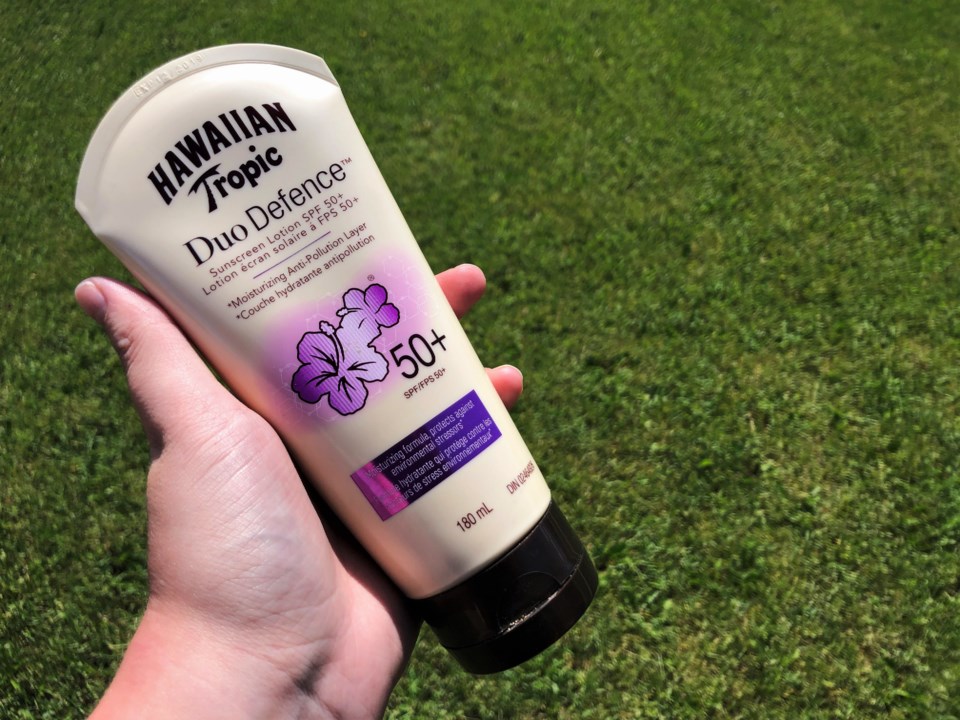With June comes warm weather and an annual reminder to all Saskatchewanians to keep sun safety in mind when they head out to enjoy the outdoors.
Saskatchewan receives the most sun out of all of the Canadian provinces, which is why Sun Smart Saskatchewan, a non-profit coalition of public health partners and experts, has plenty of tips to help people play in the sun — beginning with the importance of sun safety.
Most already know the basics of sun care — cover up, wear sunscreen, and look for shade when things get hot outside — but the Sun Smart Saskatchewan website offers some extra tidbits that might be new to some.
For starters, wearing lightweight clothing is better protection than sunscreen, and dark colours are more protective than light ones. As well, fabrics protect better when dry rather than wet.
Some fabrics have an Ultraviolet Protection Factor, or UPF, on the tag, which shows how much UV radiation will pass through dry unstretched material. A higher rating is better, as the higher the UPF, the less percentage of the sun’s rays will reach your skin.
Speaking of protection ratings, here’s a sunscreen tip: the best kind of sunscreen to stock up on is one that offers a broad spectrum formula, as that protects against both UVA and UVB rays. It’s also recommended to pick a sunscreen that is SPF 30 at least and is water-resistant.
It's not advised to use sunscreen on children younger than six months of age and to test sunscreen for any allergic reactions before using it on children. But once you find a formula that works, there’s no such thing as too much sunscreen, say experts. Be sure to reapply anytime you hit the water, towel off, or perspire excessively.
In addition, it's best to avoid planning outdoor activities when UV rays are at their strongest during the day, between 11 a.m. and 3 p.m. This applies even to cloudy days, as thin cloud cover can still offer a high UV index.
Wearing a hat, sunglasses, sunscreen and light clothing are all ways of protecting yourself from the sun’s harsh rays, and they are tactics that work best in conjunction — alongside utilizing proper shade. UV rays can reflect off of surfaces, so it’s important to be fully protected wherever possible. Sun protection methods should be used anytime the UV index is 3 or higher.
Sun Smart Saskatchewan’s mission is to raise awareness about skin cancer, which is strongly linked to overexposure of UV radiation both outside and in artificial tanning practices.
Although there is a genetic factor linked to the risk of skin cancer, 90 per cent of skin cancers are caused by UV exposure causing damage to DNA or cell functions. That damage appears in the form of a suntan or sunburn, although damage can occur even if you don’t experience these visual cues.
Alongside skin cancer, too much sun and not enough sun protection can also cause premature ageing of the skin, like the development of wrinkles or age spots, and eye damage as serious at cortical cataracts.
Tanning beds are also a serious concern in the fight against skin cancer. Research shows that people who started using tanning beds before the age of 35 had a 59 per cent increase in the risk of melanoma, the most serious form of skin cancer.
Experts say that indoor tanning is not a healthy alternative to natural sun, nor is it safe in moderation or as protection from sunburn by acting as a “base tan.”
In addition to raising awareness about the risk of skin cancer, Sun Smart Saskatchewan has another health issue in mind when it talks about sun safety: heat stress.
Heat stress happens when your body loses the ability to self-regulate your temperature and can lead to heat rash, heat cramps, heat exhaustion, and the most serious heat stroke — which can damage the heart, lungs, kidneys, and liver.
The environment contributes largely to any heat stress situations, but there are a few things to keep in mind that you can do to avoid it, too. Everyone handles heat differently, and a number of things can contribute to heat stress, including dehydration, improper clothing, pre-existing medical conditions, acclimatization, medications, or poor fitness.
The best solution to heat stress is to be aware, especially when undertaking psychical exertion outside, and seek medical attention as soon as you notice signs of heat exhaustion.
Although skin cancer and heat stress remain common in Saskatchewan, both are also largely preventable if residents stick to the few recommended safety practices.
And, as Sun Smart Saskatchewan says, remember that “there’s no such thing as a healthy tan.”
For more information and tips about sun safety, be sure to check out Sun Smart Saskatchewan online at sunsmartsk.ca.




